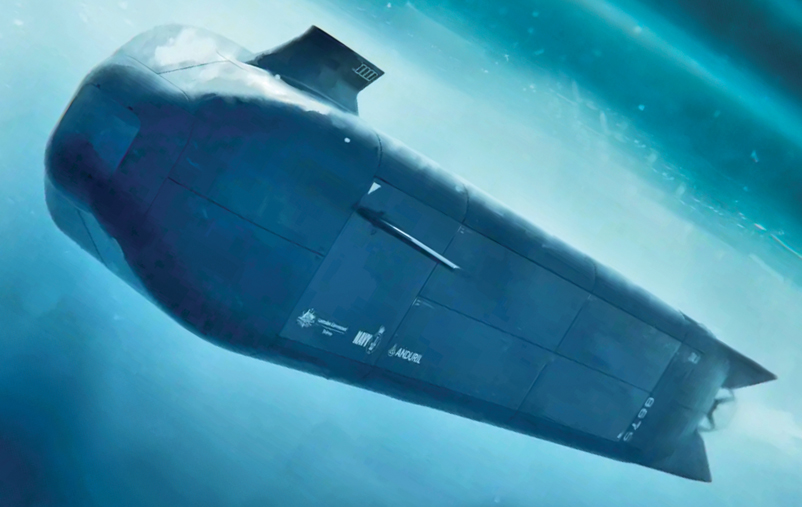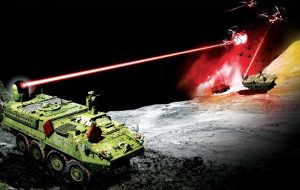The reliance on unmanned vehicles has become a hallmark of modern military systems. In recent years, drones have dominated aerial warfare, with the United States pioneering their use in Iraq and Afghanistan since the 1990s. The Russia-Ukraine conflict has further highlighted the significance of drones in contemporary military engagements. Similarly, unmanned submarines have proven their effectiveness in inflicting significant damage on larger vessels and carrying out a wide range of operations.
In this context, there is a noticeable shift in the foundations of naval warfare, primarily driven by advancements in unmanned underwater vehicles (UUVs). These vehicles navigate depths that were previously unimaginable as strategic targets. The Australian “Ghost Shark” submarine, officially announced by Canberra in April 2024, epitomises this evolution and signals a transformative future for naval defences, particularly in the Indo-Pacific region.
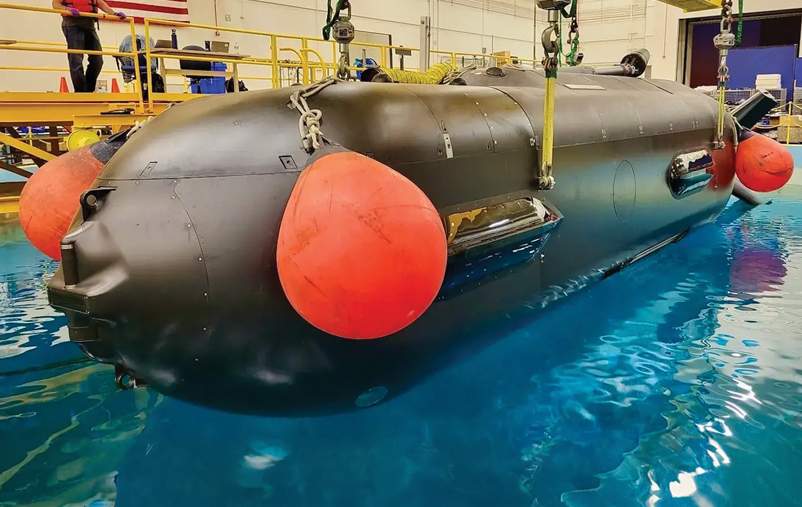
Ghost Shark
Ghost Shark is a prototype UUV recently introduced by Australia. Various studies suggest that such submarines could shape the future of underwater warfare by exerting force while minimising risks to human life.
Boasting multi-purpose modular capabilities that allow it to respond flexibly to diverse missions, some consider Ghost Shark the world’s most advanced autonomous underwater vehicle.
The initial model of the Ghost Shark was developed through a collaboration between the Defence Science and Technology Group (DSTG), the Royal Australian Navy (RAN), Anduril Australia, and the Advanced Strategic Capabilities Accelerator (ASCA).
The Australian Department of Defence has indicated that this submarine will enhance stealth, independence, and long-range capabilities underwater, with potential applications in intelligence, surveillance, and reconnaissance operations.
From conception to practical implementation, the development of the Ghost Shark took approximately two years, beginning in 2022, with a cost of around $30 million.
Measuring about 36 feet in length, the Australian government received the first Ghost Shark (XL-AUV) prototype in April 2024, a year ahead of schedule. Three additional models are expected by the end of next year, marking a significant leap in rapid capability development.
Negotiations between Anduril Australia and the Royal Australian Navy commenced in May 2022, aiming to manufacture and deliver three Ghost Shark (XL-AUV) unmanned submarines within three years. This led to a joint development contract worth AUD 140 million (approximately USD 90 million) to produce the three submarines.
Shane Arnott, Senior Vice President of Engineering at Anduril Australia, revealed that the Ghost Shark prototype was assembled by a team of 121 engineers from 42 different Australian companies.
This collaborative effort resulted in a submarine capable of carrying various payloads to support a range of military and non-military missions, including advanced intelligence gathering, surveillance, and reconnaissance.
The modular, multi-purpose design ensures that Ghost Shark can adapt flexibly to a wide array of requirements.
Reports indicate that Ghost Shark can operate at depths of approximately 19,685 feet (about 6,000 metres) and remain underwater for up to 10 days, allowing it to function across the entire Indo-Pacific region. The development of the Ghost Shark is part of a AUD 7.2 billion investment by the Canberra government aimed at enhancing undersea warfare capabilities and advancing new autonomous and unmanned naval vehicles.
Australia is spending over AUD 10 billion on autonomous and unmanned systems as part of a comprehensive plan to bolster its defence capabilities.
Ghost Shark closely resembles the American Orca UUV, developed by Boeing and delivered to the US Navy for testing in December 2023. The Orca UUV is also an advanced, autonomous unmanned submarine. However, the development of the American Orca UUV took more than a decade. Boeing was supposed to deliver the first model in December 2020 but was delayed until December 2023. The estimated cost of the submarine was around USD 379 million, but this figure eventually exceeded USD 621 million.
While many specifications and capabilities of the new Australian unmanned submarine remain undisclosed, some reports have shed light on certain features and capabilities.
Ghost Shark is relatively small compared to traditional submarines, as it does not require a pressure-resistant crew compartment or complex sound-dampening equipment. Instead, it relies on placing electronics in waterproof modules, enabling the Royal Australian Navy to conduct stealthy, independent, long-range underwater operations.
The primary challenge facing the new Australian submarine is its size, which is small compared to conventional submarines and roughly half the size of the American Orca UUV, which measures about 85 feet in length. Size is critical for submarines, as it influences endurance and firepower. Consequently, the smaller size of the Ghost Shark may impact its endurance and firepower capabilities.
Moreover, the relatively short hull of the Australian submarine means reduced underwater propulsion battery capacity, navigation and target detection sensors, and onboard artificial intelligence capabilities, not to mention the weapons it can carry to strike other submarines and surface ships. For instance, the Ghost Shark will not be able to carry the Royal Australian Navy’s standard American Mark 48 torpedo and will need smaller torpedoes instead.
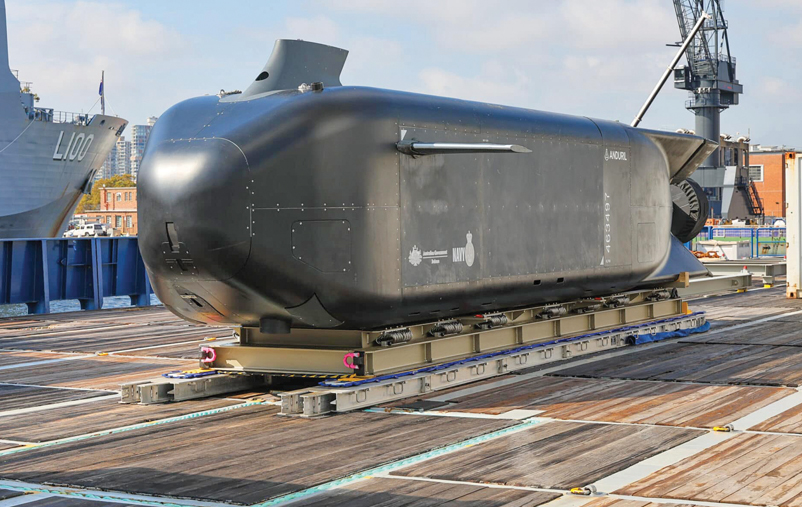
Increasing Reliance on Unmanned Submarines
The emergence of unmanned submarines is linked to the geopolitical tensions of the Cold War era when there was an urgent need for covert mechanisms to conduct reconnaissance and gather secret information in the maritime domain. This drove the United States to begin early experiments with underwater robots, and by the 1950s, Washington had developed the “Sleeping Beauty” submarine designed for secret reconnaissance missions. However, the critical turning point in the history of unmanned submarines occurred in the 1980s when Washington launched its Unmanned Underwater Vehicle (UUV) program, solidifying the importance of these vehicles in naval operations and laying the groundwork for subsequent developments in the field.
The rapid advancements in the first decade of the 21st century, linked to significant progress in miniaturisation, communication technology, artificial intelligence, and machine learning, have enhanced the capabilities of unmanned submarines to process vast amounts of data in real time, thereby increasing their decision-making autonomy. This has significantly bolstered their ability to conduct surveillance, reconnaissance, intelligence gathering, and other specialised missions, making unmanned underwater vehicles indispensable assets in contemporary naval operations.
Moreover, their ability to operate covertly in challenging underwater environments, coupled with ongoing advancements in sensor technology, has made them vital tools for protecting maritime interests.
The reliance on unmanned submarines has grown due to their diverse capabilities, including reconnaissance, surveillance, and intelligence gathering (ISR) concerning underwater terrain, potential threats, and enemy ship movements. The stealthy nature of these submarines allows them to perform these tasks without alerting adversaries, adding significant value in strategic areas where traditional surveillance methods may be ineffective. They also play a crucial role in mine countermeasures, navigating minefields, neutralising explosive devices, and securing naval passageways. Furthermore, unmanned submarines are pivotal in anti-submarine warfare, detecting, tracking, and monitoring enemy submarines, conducting security patrols in key maritime areas, and contributing to environmental monitoring and scientific research.
Unmanned submarines offer a cost-effective alternative to expensive traditional submarines. For instance, the United States currently relies on large, manned nuclear-powered submarines capable of travelling thousands of miles and staying in conflict zones for months. However, these nuclear submarines are complex, costly, and require intensive maintenance. Building the 377-foot-long Virginia-class attack submarine costs about USD 2 billion and takes 18 months. In contrast, unmanned submarines can perform tasks like mine laying, sweeping, and chasing enemy submarines and surface ships at a lower cost and without risking human lives.
However, integrating unmanned submarines into military strategies presents challenges, including cybersecurity vulnerabilities, energy efficiency, and potential environmental impacts.
Will Traditional Submarines Be Phased Out?
The depths of the seas are increasingly threatened, with repeated attacks on infrastructure in various parts of the world. This has led some to describe the current era as one of “seabed warfare.” The underwater environment’s high level of obscurity makes infrastructure targets for hybrid wars more attractive. The advancements in unmanned autonomous submarines, which can be launched from hundreds or thousands of miles away and approach their targets undetected, have made this even easier.
Despite the ongoing advancements in unmanned submarines, some Western reports suggest that it is unlikely that naval forces will completely abandon large traditional submarines in the near future. Even with an increased reliance on unmanned submarines, traditional manned submarines will continue to play crucial roles. A report from the Australian National University, titled “Transparent Oceans,” predicts that the oceans will likely become entirely transparent by the 2050s.
This aligns with statements from Palmer Luckey, founder of Anduril Australia, who noted that traditional submarines would continue to fulfil essential roles and that unmanned autonomous submarines could act as a “force multiplier.” He emphasised that unmanned autonomous systems will shape the future of underwater warfare, but this does not mean the complete phasing out of manned traditional submarines. Instead, they will primarily work in conjunction with unmanned systems.
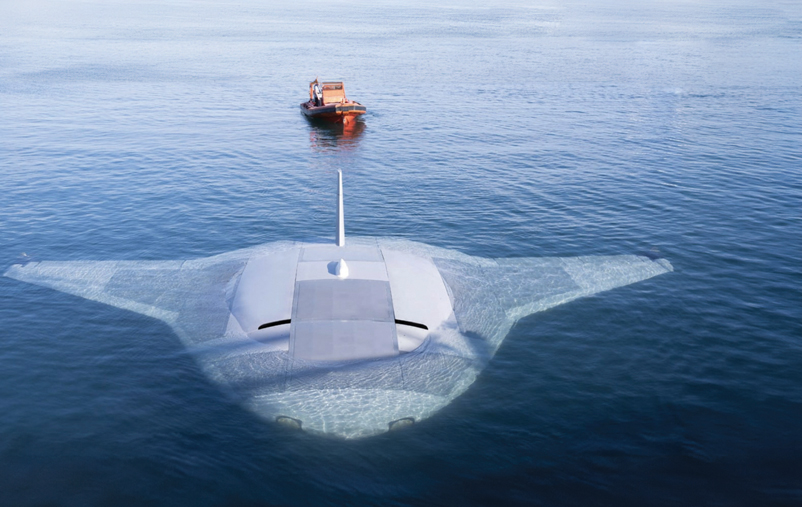
Will Future Wars Be Fought in “Transparent Oceans”?
International powers are making significant moves in the competition for control over the depths of the seas.
In this context, NATO announced in February 2023 the establishment of an Undersea Infrastructure Coordination Cell in response to the attack on the Nord Stream gas pipeline. France also launched its seabed warfare strategy to address growing threats from advanced maritime technologies.
Moreover, the importance of unmanned submarines has been highlighted by the ongoing Russian-Ukrainian war.
Similarly, the United States is developing various unmanned submarines, the latest being the Manta Ray, developed by Northrop Grumman and tested in February 2024. Washington has proposed an Advanced Undersea Warfare System, which includes a network of fixed maritime stations/platforms capable of deploying defensive and offensive unmanned submarines.
China is also making noticeable strides in developing unmanned submarine systems. Some American estimates suggest that Beijing may have already developed a submarine similar to the American Orca, with other estimates indicating that China is currently developing more than six types of unmanned submarines. Beijing is working on an “Underwater Great Wall” comprising ships, bases, and unmanned submarines to secure its control over the region. The Chinese Project Haidou-1 has made significant progress, achieving a record dive depth of approximately 35,787 feet (10,908 metres). Another Chinese submarine, the Haiyan, set another record for endurance by completing a journey of about 2,236 miles (approximately 3,600 kilometres) over 141 days in the South China Sea.
Additionally, Russia recently announced the development of a nuclear-powered unmanned submarine, marking a critical advancement in unmanned vehicles and ushering in a new era of naval warfare based on autonomous maritime systems.
However, some analysts suggest that the rapid development and proliferation of unmanned submarines might encourage a hybrid approach to “grey zone” conflicts. This would increase the likelihood of avoiding full-scale war, as nations could use these vehicles to achieve their objectives without crossing the threshold into conventional warfare.
AUKUS Alliance and Enhancing Australian Submarine Capabilities
The Australian unmanned submarine Ghost Shark can significantly boost the naval alliance between Australia, the United Kingdom, and the United States under the AUKUS pact. Australia’s announcement of the Ghost Shark coincided with the United States’ unveiling of its unmanned submarine, the Manta Ray. Unmanned underwater vehicles (UUVs) are one of the eight main focus areas within the AUKUS agreement. This is largely because the member countries face numerous challenges, including attracting and retaining skilled personnel, the need to rapidly enhance capabilities within limited budgets, and delays in modernisation programmes. UUVs offer a cost-effective solution to these challenges, being cheaper and faster to develop than manned submarines, and not requiring highly trained personnel onboard.
Despite significant investments in UUV development by all AUKUS members, each has approached these challenges differently, leading to varied results. The UK began experimenting with UUVs in 2018, with MSubs in Plymouth receiving a £4.6 million contract to convert the manned S201 submarine into a prototype UUV, delivered to the Royal Navy in 2020 for further testing. In 2022, the UK launched the Cetus project as a more advanced step from the S201.
While the UK is still in the prototype development phase and the US is constructing advanced UUVs, Australia has adopted an “affordable mass” strategy for its Ghost Shark. This strategy involves deploying numerous unmanned platforms permanently in the operational area, ready for rapid response when needed.
Although AUKUS is still an emerging security pact and not yet a comprehensive security framework, it remains an innovative mechanism for enhancing military cooperation and operational support among its members. This pact can reshape regional power balances by focusing on two primary pillars: developing nuclear-powered attack submarines as a long-term investment and advancing AI-powered unmanned submarines for achieving strategic short- and medium-term objectives more efficiently than manned submarines.
Under the AUKUS agreement and its detailed plan, estimated to cost between $268-368 billion, Australia aims to acquire approximately three Virginia-class nuclear-powered submarines from the US by the 2030s. This is to bridge the gap until the next generation of Australian submarines, primarily designed in the UK, enters service in the 2040s.
In conclusion, Ghost Shark is a crucial tool for Australia to enhance its naval capabilities and restructure strategic paradigms, both in terms of time and the concept of “affordable mass.” Its advanced capabilities, particularly its reliance on artificial intelligence and competitive pricing, may increase its appeal. Anduril has announced plans to secure sales of Ghost Shark submarines to Australia’s allied countries.
«By: Adnan Moussa
(Assistant Lecturer, Faculty of Economics and Political Science, Cairo University)


